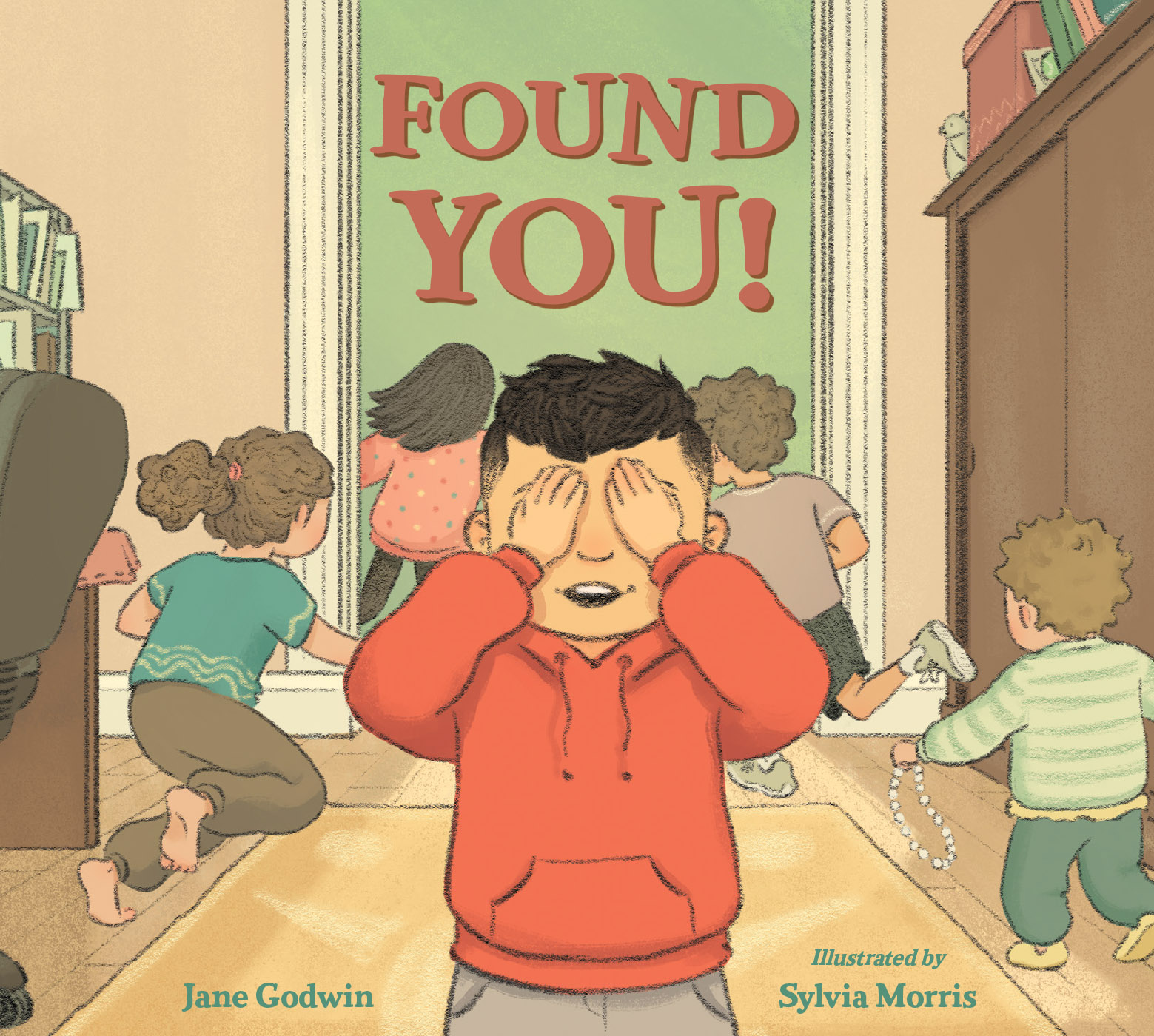The Best Hiding Place
Shortlisted for the CBCA Award for New Illustrator (2023)
“One, two, three, four, five, six, seven, eight, nine, ten… Coming, ready or not!”
Archie has found the best hiding place. But after a while, it feels too quiet.
Is the game still on?
Has Archie been forgotten?
From bestselling author Jane Godwin and emerging illustrator Sylvia Morris comes a rich and atmospheric story that captures the highs and lows of hide-and-seek, and the joy of being found.


Found You! (US Edition)
Coming September 9, 2025:
A gently reassuring look at the big feelings elicited by a classic childhood game.
Kirkus Reviews
“The colour palette in The Best Hiding Place creates a lovely retro and nostalgic quality. Each and every image allows the reader to peek inside different parts of the house, often showing multiple points of action on one page. Archie’s claustrophobia in his hiding spot is conveyed effectively to create a sustained moment of tension that readers will identify with. Distinct characters and relationships are shown, and some humorous details invite readers to re-visit and examine earlier illustrations. The illustrations perfectly capture those mixed feelings of playing hide and seek as a child, which will appeal to readers of all ages.”
On StoryBox Hub
Read by Trystan Go.
Full video, and Auslan edition with Tegan Blanch, available through the StoryBox Hub. (If you don’t have a subscription, check with your local library to see if they do!)
Behind the Scenes
How I made the pictures…
All the illustrations were made 100% digitally, in a program called Clip Studio Paint. I used a small selection of digital brushes, most of which were designed to mimic dry media (pencils, pastels, and chalk). These brushes meant that I could blend tones, and scrape one over the other, to create warm scenes of light and shadow. For the in-cupboard scenes, I also used digital brushes designed to mimic watercolour. I bought all these brushes many years ago from Daub and Frenden.
I worked with one layer for the background lines, and another layer for the children lines. Clip Studio Paint has built in perspective grids, and I used them a lot for the line placement. For the colour, I kept the furniture separate from the walls and the floor, and the children separate again. This meant that I could blend colours in a loose manner, without worrying about fiddly outlines.
What I was thinking…
It’s a weird thing to read a picture book without any pictures. This was my first ever book, and I felt very unprepared. I didn’t immediately know how to interpret the story. But I did, at least, immediately feel like I knew Archie, and he made sense to me.
I had two strong ideas pulling at my brain. The first was search-and-find books. I was inspired by Where’s Wally, and Jan van Haasteren’s puzzles. That brought me to the idea of having a high-up viewpoint, and full, detailed scenes. The second was Archie’s internal journey. Most of this book is really happening inside of Archie’s head. It’s emotional. It’s all about his joys and fears, all by himself, as he moves from the outside world into his hiding place and then back out again. This gave me an excuse to play with lots of light and shadow, which I love to do. It also reminded me of when I was Archie’s age, having similarly intense, existential thoughts, and I was excited to depict some of those feelings.
Who else helped make the book…
Jane Godwin is the author, and I’m so glad she wrote such an intriguing story and characters, and that she was willing to hand them over to a debut illustrator to poke and prod at.
Meg Whelan from Affirm Press was the editor who took the chance on me and sent me Jane’s story. We had already worked together on book covers before, and it was great to go into the whole new (daunting) process with someone I already knew and trusted.
All the way through I got tons of useful feedback from Meg and Jane. We stretched and pushed and pulled the storyboard, making sure the pacing was just right. They pointed out to me that I’d managed to lose Archie for three pages in a row… (He’s just so good at hide-and-seek!) and in general were as lovely and helpful as I could have hoped for.
The same goes for Sarah Mawer, the book’s graphic designer. Right at the end of the whole book-making process, I was moving country and very overwhelmed. Sarah handled a lot of bits and pieces that I wasn’t quite managing, along with her absolutely beautiful design work throughout.


